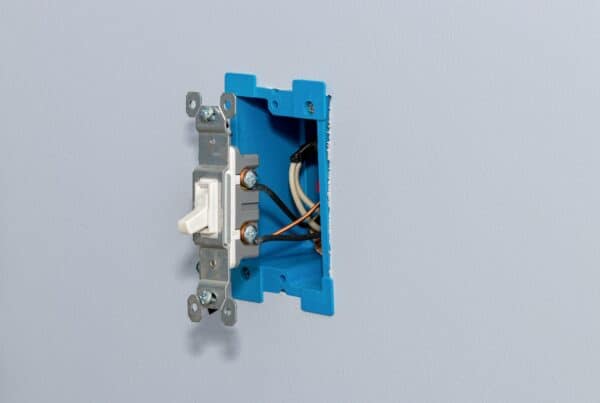
If your house was built between 1965 and 1973, it likely features aluminum wiring – a once-popular, affordable alternative to safe copper. However, aluminum comes with safety concerns that leave many homeowners feeling uneasy. The good news? By understanding the facts and being proactive, you can catch any issues early and prevent major problems.
In this post, we’ll be covering everything you need to know to evaluate, maintain, and ensure the safety of the wiring in your house. You’ll learn the history of aluminum wiring, key risks to watch for, up-to-date electrical codes and standards, pro tips for removal or maintenance, and when to call in a professional.
The History of Aluminum Wiring
During the 1960s and 1970s, aluminum wiring became a popular alternative to copper wiring in residential construction. It was an affordable option at the time and allowed expanding electrification of homes. But how exactly does aluminum wiring work, and how is it different from typical copper wiring?
Unlike copper, aluminum is lightweight and highly conductive while being less expensive. But it comes with some important drawbacks. Aluminum has higher electrical resistance, which can cause overheating at connections and terminals. It also expands and contracts at a different rate than other metals used in wiring, leading to the loosening of connections over time.
These factors can lead to flickering lights, outlets losing power entirely, and increased fire risks in homes wired with aluminum. While code has changed to discourage pure aluminum wiring in new construction, many older homes still rely on outdated aluminum branch circuits.
The good news is aluminum wiring in a house can often continue safely supporting electricity needs with proper maintenance. But homeowners need to understand the risks and be proactive. In some of the sections below, we’ll explore that maintenance in detail!

Aluminum Wiring Risks
There are some very real concerns about the safety of aluminum wiring. The higher electrical resistance of aluminum can undeniably lead to overheating at connections and outlets. Over time, its expansion and contraction can also loosen wire terminals, increasing fire hazards if left unaddressed.
According to the U.S. Consumer Product Safety Commission, wiring issues cause over 40,000 house fires each year. While only a fraction directly relates to aluminum, its risks cannot be casually dismissed. An overheated connection or loose terminal can start an electrical fire before warning signs appear.
Prevention and early maintenance are key. Homeowners should watch for any signs of issues like flickering lights, discolored outlets, and frequent trips. Catching problems early allows for properly addressing them.
How to Spot Aluminum Wiring in Your Home
For most homes built between the mid-1960s and early 1970s, there’s a good chance they contain aluminum wiring. This period saw a spike in the use of aluminum due to copper shortages and cost savings.
To check for aluminum wiring, you’ll need to access the electrical panel and outlets for the house. Aluminum wiring will be connected to circuit breakers in the main panel. It has a duller silver color compared to copper’s orangey hue. The wiring leading from the breakers to the outlets should also be checked.
Watch for labels near outlets that say “CO/ALR” or “Al/Cu”—these indicate it’s safe for aluminum wiring. Outlets compatible with aluminum will also have darker screws whereas copper outlets use brighter brass screws.
Lastly, check for labels at the main electrical meter outside. Aluminum wiring will be indicated there if present. However, always consult an electrician if you’re unsure!
What to Do if You Have Aluminum Wiring
Discovering that your home contains aluminum electrical wiring can initially feel concerning. However, there are a few important steps you should take:
- Don’t panic. The situation is manageable with the proper knowledge and response.
- Locate your electrical panel and all outlets to identify the areas with aluminum wiring. Watch for “Al/CU” labels.
- Educate yourself on aluminum wiring risks and maintenance best practices. Knowledge is power.
- Exercise additional caution and monitor the wiring closely for any signs of problems.
- Maintain diligent electrical safety habits like avoiding overloads and checking for loose plugs.
- Consider rewiring some circuits with copper if renovating.

Proactive Maintenance for Aluminum Wiring
While professional electricians should handle major aluminum wiring inspections and repairs, there are some maintenance steps homeowners can take themselves to maximize safety:
- Use outlet testers to check for faulty wiring connections. Test annually or anytime you suspect an issue.
- Be cautious and avoid overloading circuits or daisy-chaining extension cords and power strips.
- Check outlets for heat frequently as overheating can indicate connection issues.
- Ensure outlets have tight connections by wiggling plugs and checking for looseness.
- Use copper pigtails for connecting copper appliances/fixtures to aluminum wiring.
- Label all outlets and switches clearly as being aluminum wiring compatible.
- Consider AFCI circuit breakers (arc fault circuit interrupters) to detect and prevent sparks (or arcs).
- Keep circuits clean and dry to prevent corrosion and hazards.
When to Call a Professional
First and foremost, if you notice any signs of a potential electrical issue, this is always enough reason to consult an expert. These signs can include flickering lights, frequently tripped breakers, discolored or warm outlets, unusual buzzing from switches or fixtures, and flickering or dimming lights. Strange smells or the smell of burning plastic can also indicate dangerous wiring conditions. Acting quickly could prevent a fire.
Additionally, it’s best to have a general inspection of your electrical system at least every 3-5 years as preventative maintenance. They will thoroughly evaluate connections, outlets, switches, and wiring for any evidence of issues. Even if nothing seems amiss, regular professional inspections help confirm that everything remains in safe order.
Finally, any major renovations or upgrades to your electrical system call for bringing in an aluminum wiring specialist as well.
Conclusion
If you’ve discovered aluminum wiring in your vintage home, don’t panic. Discovering this in your home is reason enough to pause and consider your options, but with the right knowledge and preventative care, homeowners can continue safe electrical operations.
If you’re not sure whether your home contains aluminum wiring, or to schedule a complete inspection of the house, the experts with All Coast Home Inspections are here to help – schedule online today in Houston, TX, and surrounding areas.



